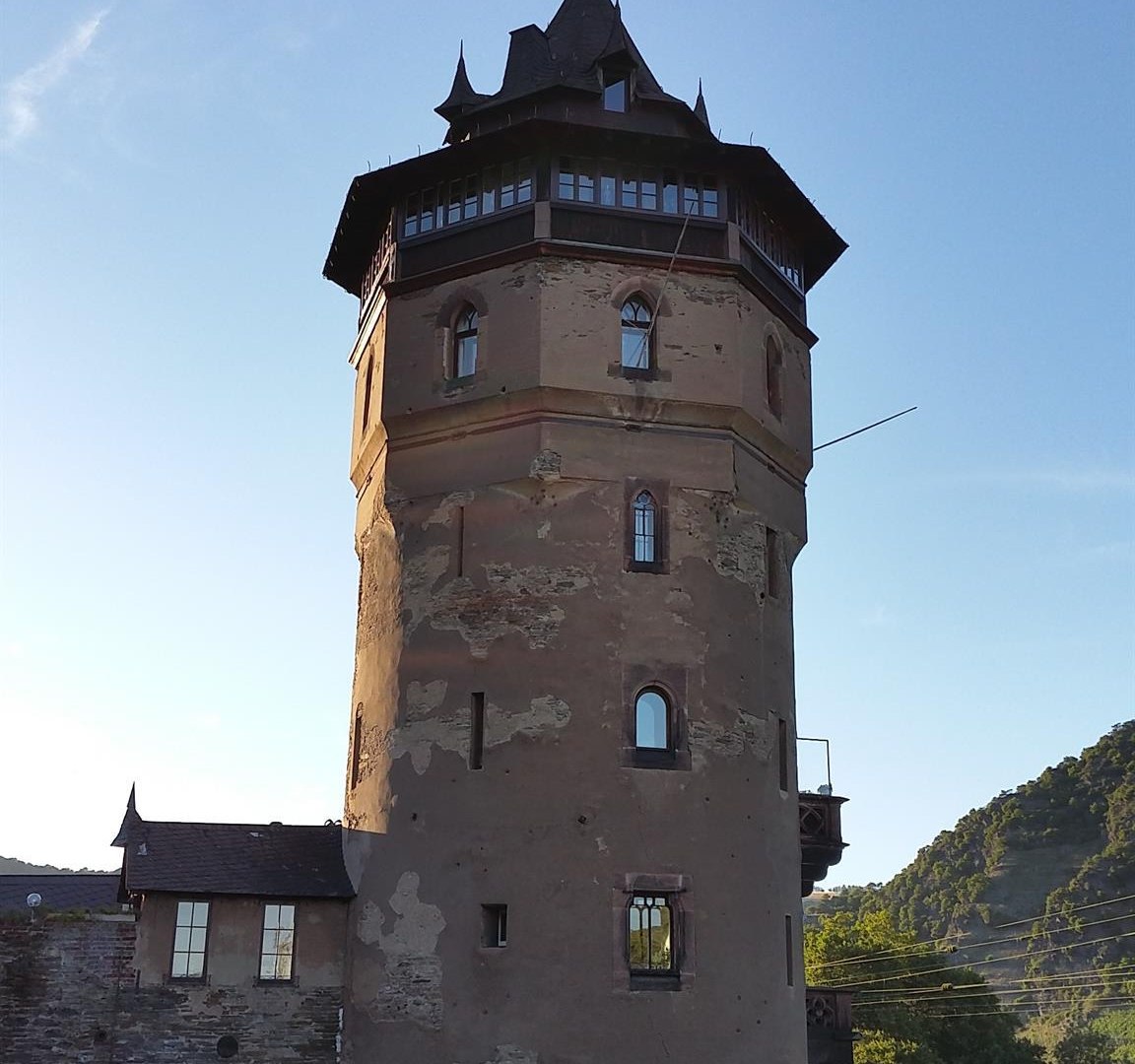Roter Turm
Unterstr. 2, 55430 Oberwesel
Towards the Rhine, the Red Tower forms the border between the southern suburb and Kirchhausen and thus connects two construction phases of the city fortifications. At the Red Tower, the city wall bends at a right angle to the west towards the mountain side. On the Rhine side in a northerly direction, the smaller round tower, tower and house Schönburg are located in the immediate vicinity. In Oberwesel's town architecture, the Rote Turm (Red Tower) is considered a counterpart to the Ochsenturm (Ox Tower) and - even though it is also a corner bastion - primarily pursues a representative function. This round tower is supposed to refer to the power and importance of Oberwesel. Once, the plastered round tower had two functions: on the one hand, it was supposed to be a representative object or landmark of the town, like the Ochsenturm, and on the other hand, as a corner bastion, it was supposed to protect the town from attacks. The tower, the gate and the city wall formed a seamless defensive unit. For defensive purposes, embrasures and wide slit windows were let in on all sides, which were extended or completely redesigned during the reconstruction works.
The Red Tower was sold in 1864 for 150 thalers together with a part of the city wall to the court painter Carl Haag from Erlangen. He converted the Red Tower into living quarters and a studio, which can be visited. Before the reconstruction, Carl Haag painted the ruins of the tower as well as his vision of the new Haags Tower, so that the structural change was documented.
As the Red Tower presents itself today, it is the result of the rebuilding (1864-1866) by Carl Haag, so that today it is only referred to as the Haags Tower. A fellow painter, who was also a professor at the School of Applied Arts in Nuremberg, was involved in the reconstruction. Especially the reworking of the neo-Gothic tracery windows in the upper floors as well as the neo-Gothic tower entrance bear the signature of the painter colleague, Friedrich Carl Mayer. Today, the Red Tower has a double portal, which has a neo-Gothic style on the side facing the city. The neo-Gothic double portal is framed by red sandstone. In addition, pointed-arched skylights can be made out as a further special feature. The neo-Gothic style also continues on the second floor. A large round-arched tracery window made of red sandstone can be seen here, which is also divided into two parts and ends with a closing ring. In addition, a coffered, closed parapet was inserted at this point. Above this window, another neo-Gothic tracery window with almost the same structure can be made out. This tracery window spans the third and fourth floors, making it the largest. Apart from the size of the window, the only difference is that there is an eight-pass rosette under the round arch. In addition, Carl Haag raised the ruins of the tower by another floor. This storey presents itself in an octagonal shape and has a projecting valley cornice as a finish. A Nuremberg dormer, a rather untypical roof form for the Rhineland, was placed on top of this as the final roof. The roof also has dormers and a lantern. It is assumed that the keep of Nuremberg Castle was the model for the roof termination. The city wall between the Tenth Tower and the Red Tower was demolished in the middle of the 19th century when the ice rink was built. However, parts of the city wall are still preserved, as Carl Haag bought sections of the wall adjacent to the tower. From the battlement Carl Haag reached the second level of the tower. He also created a new access from the Liebfrauenstraße. At this place once stood a high rectangular tower, which fell victim to the construction of Liebfrauenstraße. (Anne Gasper, University of Koblenz-Landau, 2016)

